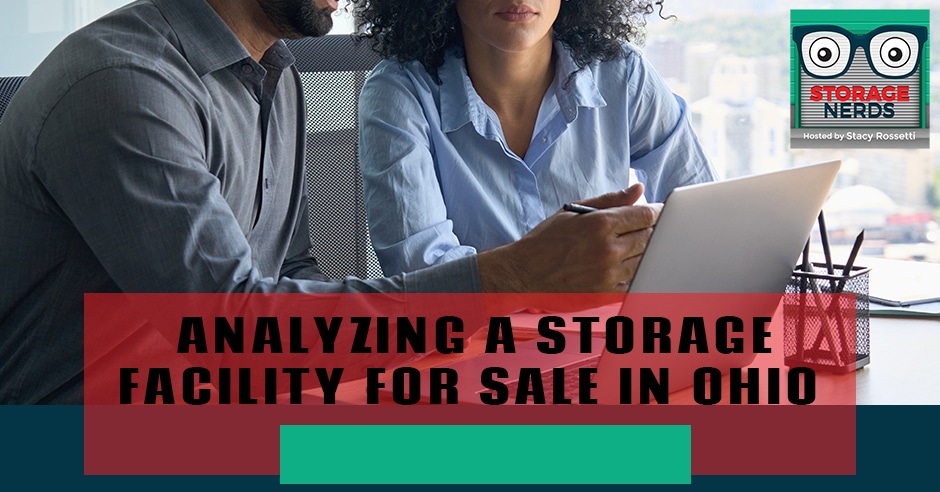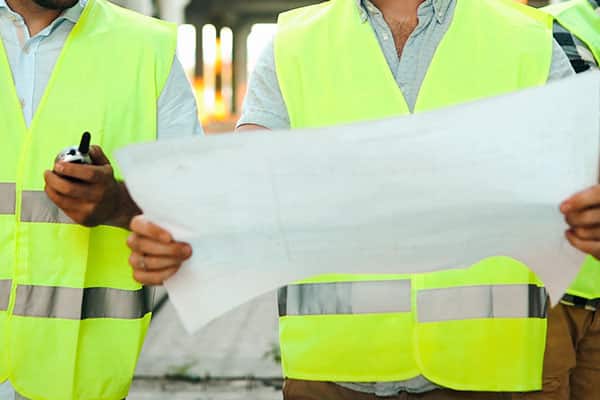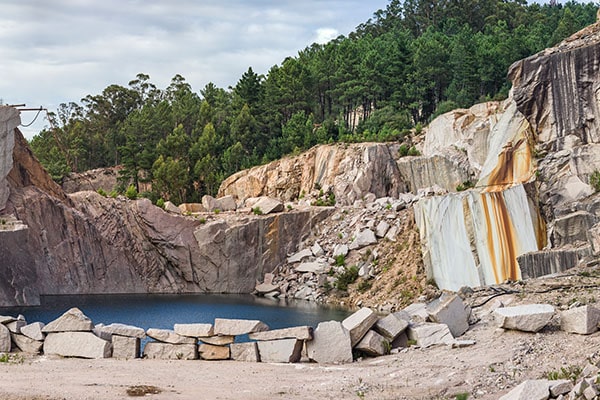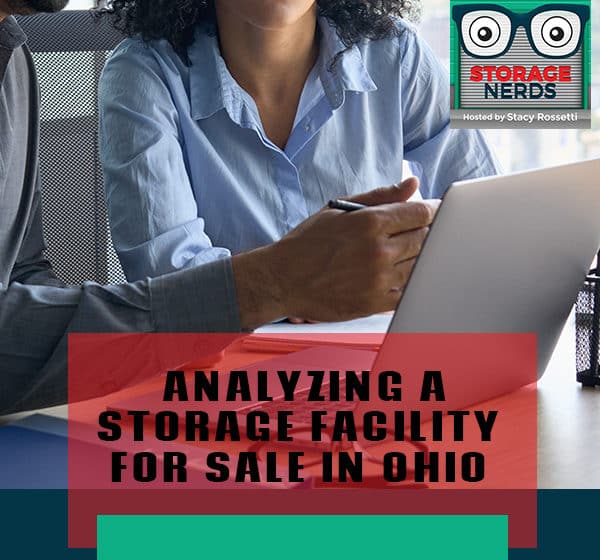
You should consider analyzing their specifications if you’re looking to put your money into storage facilities or invest in them. In this episode of Storage Nerds, host Stacy Rossetti welcomes storage nerd and a student, Heather Van Deest, into her show. Heather is looking to sell one of her storage facilities located in Ohio. Tune in on this informative episode of Storage Nerds to learn more.
—
Watch the episode here
Listen to the podcast here
Analyzing A Storage Facility For Sale In Ohio
I’ve got Heather here. The title of this session is called How To Buy A Storage Facility In The Next 90 Days Even If You’ve Never Invested In Real Estate Before. That’s what it is. Now, the truth is you cannot learn how to invest in self-storage in one session. You have to show up to the Monday night sessions so that you can learn. Learning in one session is impossible because there are so many different factors that go into it.
I teach every Monday night for free. Anybody can hop on, just hanging out here with me. I go over all the different types of topics. The name of the theme is how to buy storage in the next 90 days. The truth is in order for you to be able to buy storage in the next 90 days, you need to learn a lot of different things.
I’m not going to pitch the same session over and over again. Instead, I’m going to teach you little tiny things on a weekly basis that you can implement into finding, funding, and running your storage facilities. On top of that, this becomes an episode. This session becomes the StorageNerds show. This will be put out into the world. If you’re driving around and you need something to listen to, then you can always listen to the past sessions that you missed on the show. We want to remind everybody about that.
Also, sometimes I bring on students, and I have them talk about their deals and their experiences and things like that. That’s what I did with Heather. She’s a student looking to sell one of her deals. I figured she could pitch it to everybody. See if anybody’s interested and you could also ask her questions about the deal and everything too. We’ll let Heather come on here and she could tell her story, where she’s at and what she’s doing now.
If anybody is interested in buying the deal, then you guys can contact her and work those details out. For this session, Heather is going to come to talk, and right after this, we’ll come to the pitch. After this session, if you’re interested in further educating yourself, you are more than welcome to check out my course. You can go to StacyRossetti.com for the course, which is called Super Simple Self-storage. That’ll guide you through step-by-step how to get started. It’s my six-step system and it will show you all the different things you need to know. I wanted to point that out before we get started. Heather, how are you?
I’m good. How are you doing?
I’m doing great. Did you have a good weekend?
Yes, we did.
Good. Sounds fun.
Summertime is fun.
Tell us about your travels.
We lived in Boise for years. We second that trying to get to Idaho.
Idaho is very nice. Tell everybody a little bit about yourself. Tell your story and stuff, and then you can get into your facility. If you have any questions at all, ask Heather, and she can get into how she does everything and runs everything.
My name is Heather Van Deest. I live in Columbus, Ohio. That’s where we’re at now and mainly investing in the Midwest region in storage. It’s been a few years since we bought our first facility. I was a member of Stacy’s original group of students. I learned quite a bit from her and Pete. Now my husband and I own and operate four facilities. A few of those are with partners. We have one that I wanted to share a little bit more about where I’m looking to sell this one. It’s largely stabilized.
This facility is in Wooster, Ohio, which is in Northeast Ohio. It’s outside the Akron-Canton Metro Area, about 20 or 30 minutes from that area. In Wayne County, Wooster is the county seat. It’s the biggest town around. This location is on Fredericksburg Road. It’s 132 units and about 20,000 square feet. We have some boat and RV storage, but it’s not the main focus. There’s some leftover space, so we have a handful of spots. It’s pretty much developed to its capacity. Also, we have a four-unit apartment building on the property. It’s a little over two acres, and the asking price is $1.375 million.
Can you tell everybody how you find this, so everybody has an idea?

This is your quintessential needle in the haystack. I was virtual driving on Google and I literally saw this from above and realized that it was not on Google anywhere. I then call the owner. Those are harder to find but still out there. It takes a lot of time and effort to do that. Either driving the way Stacy does, or I tend to do the virtual driving on Google Maps.
I called, and they weren’t getting as many calls as a lot of people because they weren’t on Google. Where we’re at now is our occupancy is climbing. It’s gone up a few percentage points. We’re at 88% now. The rent per square foot is $0.54 a square foot. When we closed on the acquisition, that was at $0.37 a square foot. You can see a little bit more information there about the units and when they were built.
The apartment building is a little bit over 1,800 square feet. The apartment building is right here. It almost looks like it could be a storage building. These are small one-bedroom, one-bath, more or less efficient apartments built on the same parcel as the storage. That’s largely why we’re looking to sell because we want to focus on our coordinate self-storage.
I can tell you a little bit more about the apartment building as we move forward, but here is a little bit more of the details of the units, the RV, and boat storage. A little bit more about some highlights. Based on the apartment building now, we’re estimating, after talking with local realtors, that you could rent the apartments out for $600 a month. They aren’t rented. We had a couple of people move out when we took over management. We decided to focus on the storage end of things. This is a nice value-add opportunity for someone who wants to start out with a small apartment building or already knows apartments and multifamily.
You have that opportunity to add almost $30,000 of income a year. In addition to stabilizing, the people who weren’t paying moved out and got doing auctions. We upgraded the keypads in the gate, so we’re running on easy storage solutions. Now, because of the gate integration, we’re able to operate it remotely a lot more easily. What that means is whenever someone doesn’t pay and get locked out, all those things automatically happen. They’re locked out at the gate through ESS. We don’t have to do anything manually. In the system, it shows up as they’re locked out and they can’t use their gate code until they pay their balance.
The storage units are largely stabilized. We’re already exceeding our income projections. We were pretty conservative on the numbers we asked when we did our underwriting. We’ve already exceeded those and are at a pretty good place in the market in terms of the rest of town. We’re still seeing lots of demand. We’ve become leaders in the market there, and people are still moving in and needing storage. We don’t have all the details now about owner-financing. We’re still working with our partners to determine more about that, but we have discussed that as a possibility to offer to a potential buyer.
A little bit more about Wooster, it’s a college town. As I said before, it’s the county seat. It’s not too far from Cleveland but closer to Akron-Canton. The population is over 25,000. An important thing to note is it’s more of a rural area like a tertiary market. That 10-mile radius of the population is important, which is at 72,000. We have a good household median income in the area as well. That’s a little bit more about the area. This is a quick slide going over the unit mix so that you can see the breakdown. We don’t have a ton of RV parking, but there’s room to add a few more. We haven’t added any more RVs at the moment because we were focusing on stabilizing the storage unit.
That’s something we’re ramping up for. There were a couple of people that had been there a long time, so they’ve moved on, but there’s room to grow that as well. There’s a little sliver of that. You can see that the total there is 20,000 square feet once you get the unit mix all added up. A little bit more about our rates per square foot, there’s no one rate for any unit now because we don’t have original rates anymore.
We raise those by at least 15% to 20% on acquisition after giving tenants 30-days-notice. We have continued to test the market demand. These are the averages now. There’s room to improve on this number, but I think you would see, based on even this analysis, that we’ve pretty much doubled what our gross income was when we acquired the property. We’ve got the current valuation, and this will be your future valuation with our current gross annual income at $132,000.
That is what we’ve made to date, plus using that cost per square foot now all the way through the rest of the year. At this point, the P&L we have, the Profit And Loss Statement, is from October until the present time. Obviously, we’re not going back to the days when we first acquired the property from the previous owners with the rental rates. That’s the basics.
Are those shingle roofs?
They are. They are not metal at this location.
How old are they?
I’d have to check. I think they’re okay now. There are a few areas that need a few repairs that we’ve been working with the local roofer on. It’s an area where a lot of Amish people live. We are getting some quotes on that, but I don’t have the exact dates. The previous owner was very mismanaged, so we don’t have a lot to go on from them. They weren’t very easy to work with.
We have a profit and loss from January 2022 to the present. We can go back for sure until October 2021 and provide information to anyone who wants to see that. Now, we’re bringing in about $11,000 a month. I think we were under $5,000 in October and November 2022. You can see how we doubled that, but we can get more details for everyone. We’re right at 38%.
Go through the expenses. What are your typical expenses? Does it come out to about $20,000 now?
The storage niche is probably going to be a better fit moving forward for someone who really wants to be involved in a multifamily.
They’re all listed here. What I said to some students of Stacy’s is it’s going to be about somebody that’s managing remotely. Everyone here on this call will probably have a similar approach, so 30% is pretty good. We always look for ways to shave that down, but contract labor is our boots on the ground. We have someone locally that does our unit audits weekly and maintenance projects that need to be done. We have someone that answers the phones and does the day-to-day collections and all that thing. We’ve got insurance. This is mainly going to be the ESS and other apps we use. Salaries are mainly the person that answers the phone for us.
Does that software include the call center?
No, we don’t have a call center. We did when we were onboarding, but we don’t have the call center anymore. My bookkeeper is my husband, so I’d have to find out more about what that is, but that’s broken down by property. This amount is the amount across the four facilities that we have. She answers the phones for all four facilities. This is going to be a bit high for now because we’re still stabilizing things, and there were plenty of little things like this door that need a seal and maintenance. We need a new slide lock put on, so we’ve been chipping away at all of that.
We got new lighting. I’m trying to think what else we’ve done, but we’ve generally not yet needed to do large CapEx at the Fredericksburg property. We did put a chunk of change into getting the gate operational because when we closed, that was not working, but now it’s been up and running well. We finally have a great gate tech too. Property taxes and sales tax in Ohio, but largely, in Georgia, there’s no sales tax. We collect that every month. Our internet expenses, call rails, our cost phone system then the electricity on the ground.
That’s what we come up with. We have the rent roll here too. You can see the wide range of rates here. Some of it is based on the size, but also, you’ve got 10×20, $87, $98, $135,$ 87. Some of them are repeats, but $134 is a good example of how we’ve been. There are $126, $89, and $87. You can see how it’s all across the board, and that’s why we’re giving you an average now. The reason why they’re so different also is because we’ve been doing dynamic rate management, but I’ve been doing it manually because we have ESS, unlike Stacy has Storage.
Some of that can be pre-programmed into your system. It’s not something I want to do forever, but I have been learning quite a bit about right management by going in almost daily, especially in the high season, and checking to see who’s moved in, who’s moved out, and testing to see what the market can take.
We have some questions, but real fast, can you go back to the income sheet because I had a question about the P&L. That top line right there is basically your income coming in every single month. You’ve taken it from $5,800 to $10,000 from January until June 2022.
This shows you the build here.
What can you guesstimate for the last six months of the year income-wise?
Do you mean before January 2022? I see this as $10,200. I was talking to my husband. Like Pete and Stacy, we have our categories. He said we’re at $11,000 now, so that’s why I brought that up. Obviously, we need to get to the end of July 2022, but we’re on target for $11,000 a month. We don’t see that doing anything but increasing because we’re going to go back to the people we initially raised rates on. For some reason, I always use 10x20s. I remember them more than the 10x10s, but in a 10×20, when we acquired the property, it was $70, but not everybody was paying $70.
It was around $70. Don’t quote me on that, but maybe a few dollars more than that. They weren’t collecting $70 from everybody, so we raised everyone up to $87. As you can see, we’ve lots of other people paying more than that. What I was saying is, soon, after it’s been a matter of months, we’re going to go back to the people that are at $87 and raise them up another $10 or $15.
What we do is we’re staggering that process so that only so many people a month are getting notified. We’re not giving notice to 50 people at once about their rate raise and having them all move out at once. I love that tip that I found from another storage owner. We’re on track to be at $11,000 from July through the end of 2022. That’s how we’re getting our gross annual income of $132,000. Some of it is projections but the rates aren’t going to go back down to $5,000.
We have a couple of questions. She’s been doing this now for a couple of years. She’s got four, so if you have any questions on what she’s doing, you can ask now. This is from Eric. He says, “Heather, when you said that the facility was not on Google, did you mean that they didn’t pull up a self-storage when a Google Search has done? If they had a landline, wouldn’t that appear as self-storage?”
What I’m saying is they might have been on Google somewhere, but they didn’t have a Google My Business listing. The only way they were getting customers was from drive-bys, the phone book, or whatever the old school ways are. These folks were real estate brokers and owned a lot of multifamily then they had these. Everybody had to come into the office to sign a storage agreement and make their payments. It was the total old-school thing that you hear Stacy talking about all the time.
Talk a little bit about the four-unit apartment so people have more of an idea about that. This comes with an apartment.
They’re one-bedroom, one-bathroom apartments. There are four of them and it’s on the same parcel. We decided we still wanted to proceed with purchasing it once we got a little bit more into it. Our niche is storage, and this is probably going to be a better fit moving forward for someone who wants to be involved in multifamily. We had a property manager with who we could connect you within the next town over. He manages a storage facility in the next town over, but he doesn’t own it. He was managing the apartments for us because that’s a little bit different, apartments versus storage.

I feel like storage is a lot easier to manage remotely than having tenants that live there. A couple of people moved out. One person got evicted, and one person moved out after we acquired it. Our plan was to continue forward, have those tenants live there, and keep the status quo, but once those two had to move out, we had to decide, “Are we going to go ahead and rehab these, do the next steps, and commit to this as a secondary niche? Are we going to put all of our efforts into the storage?” At that point, we decided as a group, the partners, my husband, and I, that we wanted to focus on the storage because it’s a heavy lift to do all that.
We had to prioritize. That thing is nice. Now, the storage unit is largely stabilized. The rates are great. The riff-raff is out. There’s maintenance and things that will continually need to be done anywhere, but it’d be a great opportunity for someone that’s interested in apartments, whether they already have a portfolio or it’s their first time to come in. Maybe even do some sweat equity or have those units rehab, which we’re estimating. Our property managers said $7,000 to $10,000. It depends on a lot of things like how fancy you want to make it and what all needs are done in each unit. That’s why they’re not occupied now is simply because we had two people move out.
We were either going to continue paying somebody to manage only two apartments or have everyone move out and start from scratch. I hope that answers some questions on the storage end of things. That’s largely why we’re deciding to sell because we’ve stabilized the storage units. We were at a point where we had to decide what our next step was. We had lots of different options and we’re like, “Let’s take a look at selling.”
We have another question. Why does the previous owner want to sell?
He’s retiring. He wants to move to Florida. He wanted to do a 1031 exchange. He had partners as well, so it was he and two other guys. He wanted to buy more apartments but he’s also shutting down his brokerage because he’s in his 70s. That’s why.
Those expenses you listed are annual expenses, not monthly. It should be around $40,000.
It’s for six months.
Are there any drainage issues? It looks like there were some large dark areas in the front of some of the units where maybe the water was pooling.
That might be a future CapEx. It’s nothing you don’t have to do overnight. I have this at all my storage facilities now. Half of the site has drainage built into the tile down to the ground, and the other half doesn’t even on the same building. Do you have this, Stacey? It’s so random. They decided, “We’re going to put some here and some we’re going to have the downspout go out.”
They run out of money or something.
I have this on my list per CapEx for every facility that I own pretty much.
To do what? To add a drain or to do were supposed to be done?
Pete could probably speak more to it. It’s like looking at your house or apartment. The choice between the two is your downspout goes down, you can see it goes out like a slide, the water pops out, and it’s going to go down. We had this in our own basement. We got a drainage system put in our house. It does that, or the whole PVC piping goes down into the ground. You’re not seeing where it goes, but it’s going underneath and out to a retention pond, a drain, or something like that. If you see something like that, that’s what’s going on.
Is it not a priority?
No, it’s not urgent. It’s one of those things that you would want to plan for within the next couple of years.
If you’re interested in getting more information, contact Heather. She’ll give you access to the folder where you can take that. Make sure when you give everybody access to the folder, you give them viewer access.
You just have to take that leap of faith. If it’s your first time, then just break it down and don’t do everything at once.
I cannot explain CapEx for newbies. That’s Stacey’s job.
CapEx is what are all the things I need to get fixed, and then you’ll come up with a number of how much it’s going to cost to get fixed. You can put that with the purchase price or you could do what Heather’s doing, which is, along the way, I’ll fix whatever I can whenever I can afford it.
I’ve learned that from you.
Heather, that’s what we do.
You look at the CapEx expenses, but you don’t need to worry about doing it all at once.
You took some CapEx in the front end because you were like, “I want to paint this or whatever.”
To be a smart investor, you want to have a certain amount of CapEx if you have something unexpected. We didn’t expect the gates not to work. The owner lied to us and we thought we did our due diligence. I’ve had that happen in one other facility, and we did get a new gate. You have to have a certain amount for your rainy day, like, “We didn’t plan for that.” Who could I say? No one’s perfect. Everyone’s going to miss something.
We bought a facility, the gate was working. A month later, after we bought it, the gate broke.
You can’t plan for everything. We took CapEx upfront but we largely still have a lot of it. We’re trying to get those buildings painted, but you know how it is. I saw a couple of other questions about the drop rate. I know people get nervous about that. I would say about 20% of people moved out. Every time you do it, you get nervous, but I’m telling you like Stacy does, you don’t want those tenants anyways.
On our first facility, I did $5 or $10 increases. Now I’m like Stacy. I’m like, “Decide what you want to try to get to and rip the Band-Aid off.” Even after I’ve done four, every time, I was worried, but you have to take that leap of faith because it’s either trickling through or you’re doing it all at once. If you’re concerned and it’s your first time, break it down and don’t do everybody at once. Do 1/3 and then 1/3 or something.
Get the ones that are the lower rates up to the ones that are the higher rates. You could do that as well.
The other thing that I’ve learned, too, is that you don’t want to raise the rates once.
I’m not raising the rates now, at least, because the market is changing so much. Everybody that’s been on here before because I know a lot of you is here every episode. We went over one session. It was called my Competition Tracker Sheet, which is essential. We have a master spreadsheet that keeps track of all competition and what they’re charging.
We pay attention on a quarterly basis. We look at all their prices and see where they’re at so that we can see. Obviously, you can go onto Radius+ for a lot of this stuff, but the truth is, Radius+ doesn’t have a lot of facilities on there. I buy in areas where there aren’t a lot of facilities. One of our VA’s, on a quarterly basis, looks at the prices of all the competition. What are they charging now? Are we at the same price as them? Are we higher? Where are we at? Can we lower or increase the rates?
That’s a good way to do it. Anything else?
Do you use locks or the entry code for lockouts?

Now we’re doing entry code mainly because we’re still trying to get boots-on-the-ground that we want to add another layer to another task. We haven’t had any problems. We had a couple of people that got won the auction, and took the zip tie off of the empty units. They put stuff they didn’t want in that, and then they took a picture of the clean unit to show they cleaned it out. We’re heading in the direction like Pete does both because he’s right. Somebody could tailgate and be behind someone else when they put their code in.
Do you use DaVinci Locks or no?
We do with our first facility. I know Pete had a workaround but I think you need storage for it.
Storage texts you the code. You’d have to talk to Pete about that.
ESS doesn’t have any of those bells and whistles. It was a good starting out, but I already started out and grew it. Now they keep raising the price, so I might as well go to Storage.
$7,000 to $10,000 rehab for each multifamily or a total of all four?
For each one.
They’re one-bedroom, one-bathrooms, and they need to be updated essentially. Guesstimate around $10,000, I would say, for each unit.
We did ask the realtor that was managing the apartments. People were paying $500 or $525, something like that. He said that one bedroom and one bath would be around $600, so $2,400 extra a month once you do the rehab.
You spend $40,000, and you get $2,400 a month. That’s basically what’s going to have on it. We have one final question. How has your experience been with ESS?
If you’re going to accept that you don’t have a lot of bells and whistles, it’s been good on the software management side. I would not recommend their call center to save your life. I should probably be more fair about that, but I struggled with that. I had them when I was onboarding some new storage tenants, and we had to go back and fix some things. I don’t think the training is not consistent and their prices are expensive. I use them only as a stop-gap measure, but I wouldn’t recommend that.
Honestly, that’s how all they all are. Nothing is going to be perfect. The only thing that you have to think about is that ESS doesn’t have all the bells and whistles. Storable owns ESS and StorEdge insightly, and they’re funneling all their money into storage. Keep that in mind when you’re looking for facility software. They’re not upgrading ESS. Have they done any upgrades or anything?
A good example and this is something that’s so basic. When we get a text from a tenant, you have to refresh your screen to see that a text comes in. There’s no notification for that, and that should be something that’s very easy to automate. All of us should get an email or a text saying, “You got a text.” What we have to do is whoever’s managing the software on any given day, they have to constantly refresh to look for the little button that says, “You have a text.” They know better. If they haven’t done that, they have a whole pages of things that people said, “Can you fix this? Can you update that?” I remember the first person I had. She’s like, “Submit a note to the IT team.”
She doesn’t want to do that. She didn’t even slip a note.
She said, “Have you thought about it?” She was in the Philippines. She was used to working with other big companies where you submit it to the IT team and they say, “We got it.”
Are you talking about the VA that was working for you?
Take action every day!
Yes, the VA that I had. She’s like, “What about if we did this?” I was like, “We could, but they’re not going to listen.” She’s like, “How’s that possible?” I was like, “We’re not paying that much.”
David asked a good question. He said, “Is there snow removal required for this property?”
Yes. In 2021, we needed it a couple of times. I need to find a new guy because the guy I had, all of his equipment broke and he got a full-time job. It’s nice to have a lawn mower be your snowplow guy too.
All you need is to put all those things in front of your truck.
That’s what the one guy had and it broke down. It’s not like Upstate New York. In Northern Ohio, it’s going to snow a couple of times a year. I’ll tell you something that’s interesting. We have a facility down near Southern Ohio, and it doesn’t snow as much there. They don’t even call because nobody comes out of their house when it snows down there. I don’t plow there, but for the other ones in Northern Ohio, when the snow is coming down, they’re calling and saying, “When are you going to plow?” It’s like, “First, we have to wait for it all to come down.”
They’re pretty on top of the New York, though. On Long Island, as soon as it stops snowing, you see hundreds of people out doing stuff. I remember when we were in Maine for Christmas a couple of years ago. There was a guy who would come around every day who was plowing in some house or something.
They don’t stop because they need this money. If somebody can’t do it, you’re going to move on to the next person because you needed it done.
David said, “How does the snow removal work with a gravel surface? Does it level up?
The guy that we have raises up his plow. Every season, there’s a little bit of amount of things and we have to redistribute it.
That’s what the boots on the ground person are for. If somebody came and bought this thing, would the boots on the ground person come with them and say like, “Let’s keep doing it?”
I don’t know. I’d have to talk to him and see if he’d be interested. He’s newer to working with us.
I appreciate it. Real fast before we all leave, give a quick synopsis of your last couple of years with doing storage.
I think you folks can tell from the way I talk. I’m a storage nerd like Stacy. I love storage. I have to say it’s for sure my niche. I’m not onto the next new shiny object because I’ve found my niche was storage. The biggest thing for me is that you have to take action every day. From January 2021 to June 2021, I didn’t do it every week, but I called 50 sellers a week. Some days, I didn’t even have enough. I still was developing my list and trying to make the call.
Sometimes I didn’t meet my quota because I was still trying to find people to call, but that’s how it is. Don’t worry about it if you don’t feel like calling somebody now. You’re like, “I have to get these many calls. I’m getting them done,” then all of a sudden, stuff falls in your lap. You’re like, “This is a pretty good deal.” That’s my biggest advice. It’s all about the numbers, even when you’re trying to find the deals. You have to do the work.
Are you going to get back and start looking for more storage facilities? Are you starting to feel like, “I can buy a couple more after you bought the last couple?”

You’re lucky you have Bonnie, Chris, and your team. It takes a bit longer. When we had our first one, I did everything. I answered the calls, and I’d be like, “I think I’ll make some collections calls.” It quickly goes that you have to have systems in place and who’s going to do what. That’s more of the small business end of things than the real estate piece. It’s another area that you got to learn about, but I’m going to get back out there.
Finally, AJ asks, “Where are you located?”
I said at the very beginning. I’m in Columbus, Ohio. All our facilities now are in Ohio.
Are you going you stay in the Columbus area, or are you going to look at other places?
I’m looking elsewhere too, but there are not as many nice bordering states for investing as there are in Georgia, but I’m open to anywhere. Like Stacy, whenever we go on vacation, we look at storage, drive around, and see what’s what. Thanks a lot.
Thank you very much for coming onI appreciate you coming on and telling everybody about it.
Thank you.
Everybody, I’m going to jump on the pitch if you’re interested. Take care.


